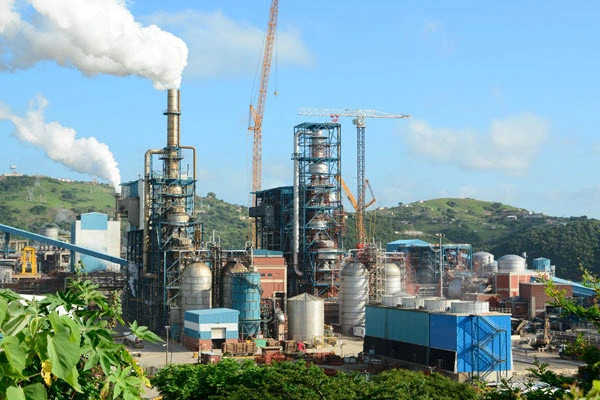Dissolving pulp mills require the use of service and maintenance cranes
Maybe you know that dissolving pulp plants need to use cranes. Pulp raw materials and semi-finished products are usually heavy in weight. The use of bridge cranes can complete the handling of these heavy materials more efficiently and improve production efficiency. However, the case we are going to talk about today is a machine with Bridge crane for service and maintenance, this crane will service all machinery on the drying line’s 80x25m footprint
Bridge cranes provide service and maintenance for machinery and equipment

A custom-built service and maintenance crane was built for the Saiccor Mill Feed Three pulp dryer line in Umkomaas on the south coast of KwaZulu-Natal, South Africa.
The crane has been designed to incorporate three hoists: a 25-ton main lifting unit and two 12.5-ton auxiliaries, all of them mechanically synchronised for tandem operation as well as offering individual lift.
Able to service all machinery on the dryer line’s floor area of 80x25m, the crane’s 25m span will deliver a maximum capacity of 50 tons and a lift height of 16m. Alternatively, the crane will lift up to 25 tons using the main hoist while, simultaneously, two independent loads of up to 12.5 tons can be managed by each auxiliary.
The crane’s load lifts are failsafe, its three hoists fitted with secondary emergency brakes on the rope drums to back up standard brakes on the electric motors.
Dissolved pulp is a key input in textile manufacturing, food processing, and pharmaceutical production.
The pulp dryer line served by the bridge crane is famous for its corrosive environment caused by the use of steam heated drying drums to dry sheet-like pulp before packaging and transportation.
The bridge crane is manufactured with carefully selected materials and features a corrosion-resistant finish, providing protection. All motors and distribution boards have insulation that meets IP65 standards, and the distribution boards themselves and all handrails are made of stainless steel. The bridge crane platform is equipped with fiberglass grilles instead of steel plates, and all crane components are coated with special anti-corrosion coatings.
Due to the limitations of on-site machinery on the floor of the dryer production line, traditional access and installation have become impossible. During the installation period, production will continue uninterrupted.
The final installation plan is to install from the roof, and all components of the bridge crane, including the end frame, 25 meter long box girder, crabs, and hoists, will be lowered through a hole on the factory roof and positioned for on-site crane assembly. After opening the roof of the factory, all components will be assembled and lifted one by one using its 550 ton mobile crane above the roof opening and through it, lowering it to a suitable position for workers to assemble the crane.
What we learned from this case
Our company has excellent engineers and various technical personnel, as well as a reliable production workshop and quality inspection system. Firstly, we can promise our customers that we can fully produce crane equipment that works in corrosive environments. Secondly, we have a certain understanding of the role that cranes play in the pulp industry. Through this case, we can have a clearer understanding of the customer needs we are facing.
The working mode of cranes in manufacturing factories is not complicated, but rather the problems that need to be solved. In this case, we can see that the problems that bridge cranes need to solve include loading and unloading pulp raw materials and semi-finished products, as well as material handling on the production line, and lifting other equipment and tools in pulp mills, such as boilers, reactors, pumps, etc. These devices and tools usually need to be installed in higher positions or need to be moved between different positions, and using a bridge crane can make installation and movement more convenient. We also need to face environments that may pose risks to the machine, such as corrosion and explosions. But the more we understand the importance of the role played by bridge cranes in pulp mills, the more we can inspire our determination to solve problems. We hope that customers can come to us with questions, and our professional knowledge always exists to provide better service for customers.
